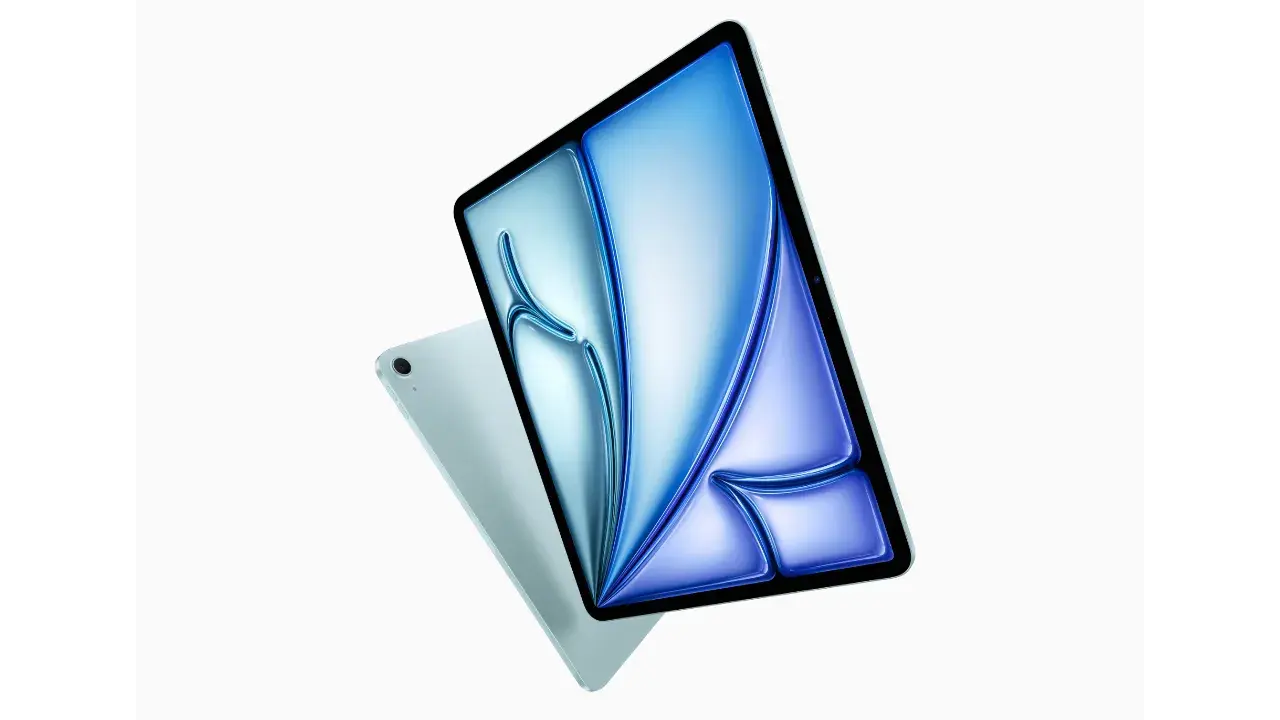
Apple also used its Let Loose event to upgrade what is now the mid-range of its iPad spectrum, as well as intro some new accessories.
While the new iPad Pro understandably grabbed the headlines, there were also some very useful upgrades to the iPad Air for anyone that only wants to spend around half that money on a tablet.
The main boost is that the new iPad Airs upgrade the previous model’s M1 chip to the M2, giving the units an up to 50% performance boost. The M2 chip features a faster 8-core CPU and 10-core GPU and, compared to iPad Air with A14 Bionic, the new iPad Air delivers up to 3x faster performance.
In some distinct foreshadowing ahead of next month’s WWDC, Apple also bills it as an amazing device for AI, featuring a more efficient 16-core Neural Engine that is 40% faster than M1.
For users who want a larger display, the new 13in iPad Air offers 30% more screen real estate than the current 11in model. Both models include advanced displays with a Liquid Retina design; an anti-reflective screen coating; True Tone technology; high brightness; and support for P3 wide color.
Long heralded but welcome all the same, the front-facing Ultra Wide 12MP camera is now located along the landscape edge. The camera also features Center Stage, which uses machine learning to automatically keep everyone in the field of view. The 12MP Wide back camera on iPad Air delivers high-resolution photos and detailed 4K video with support for 240-fps slo-mo.
Dual microphones are designed to work in unison with the cameras, capturing audio from the camera being used and minimizing background noise. The new iPad Air also has landscape stereo speakers with Spatial Audio, with Apple saying the 13in model delivers even better sound quality with ‘double the bass’, which is great for enjoying music and videos.
The 11-inch iPad Air starts at $599, while the 13-inch iPad Air starts at $799. Configurations include 128GB, 256GB, 512GB, and 1TB. Availability once more is next week
Alongside all of this, Apple also lowered the price of its 2022 entry level 10th generation iPad by $100 to $349. It also quietly discontinued the 9th generation model, the last to feature a headphone jack.
New accessories
The $129 Apple Pencil Pro has a new sensor in the barrel that can sense a user’s squeeze, allowing them to bring up a tool palette to quickly switch tools, line weights, and colors and more, all without interrupting the creative process. A custom haptic engine delivers a light tap that provides confirmation when users squeeze, use double-tap, or snap to a Smart Shape, while a gyroscope allows users to roll Apple Pencil Pro for precise control of the tool they’re using. Rotating the barrel changes the orientation of shaped pen and brush tools, while with Apple Pencil Hover, users can visualize the exact orientation of a tool before making a mark.
It supports Find My for the first time, which is going to be very handy for a lot of people, though it also now pairs, charges, and is stored on the side of both the M2 iPad Air and the new iPad Pro through a new magnetic interface, which should stop too many rolling down the back of the sofa. That is all great but sadly means it is isn’t backwards compatible with any previous iPads.

There is also a thinner and lighter Magic Keyboard, which is not compatible with anything apart from the new iPad Pro, It comes understandably in 11in and 13in versions ($279 and $329 respectively), includes a function row for access to features such as screen brightness and volume controls, introduces an aluminium palm rest and larger trackpad with haptic feedback, and Apple promises that it will provide all the experience of using a MacBook. Well, physically anyway. iPadOS is always going to mean a pretty different experience once you boot the thing up.
Tags: Technology Apple


Comments